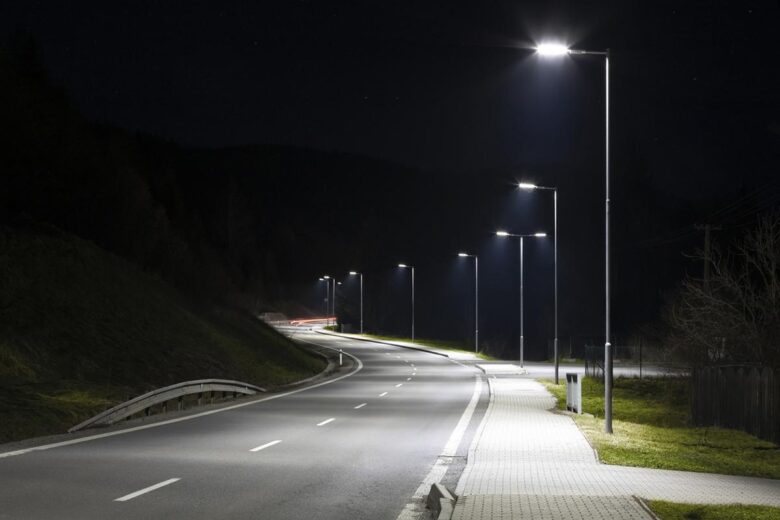Navigating the intricate process of selecting the right color temperature for LED street lights can feel daunting, even to the most seasoned urban planner. The issue isn’t just about aesthetics or energy efficiency; it’s a comprehensive blend of factors, including safety, security, environmental considerations, and local regulations. By shedding light on these variables, this article aims to illuminate the path to making informed decisions, thereby enhancing the quality of our nocturnal urban landscapes.
Contents
- Factors Influencing Selection
- Assessing Local Lighting Needs and Requirements
- Considering Safety and Security Concerns
- Environmental Impact
- Impact on Nighttime Visibility and Glare Reduction
- Balancing Energy Efficiency and Visual Comfort
- Evaluating Color Rendering Index (CRI)
- Local Regulations and Standards for Street Lighting
Factors Influencing Selection
The process of settling on the appropriate color temperature for LED street lights is not as straightforward as it may seem. There’s an assortment of factors at play, each significant in its unique way. Notably, the temperature of a light source is measured in degrees Kelvin (K). Lower temperatures (around 3000K or less) produce a warm, yellowish light, similar to incandescent bulbs. Higher temperatures (above 5000K), on the other hand, emit a cool, bluish light reminiscent of daylight.
Given this, the choice of color temperature depends largely on the intended use of the street light. If the aim is to create a relaxing, cozy environment – say, in a residential area or park – a lower color temperature would be ideal. This warm lighting promotes calmness and relaxation. Conversely, in places where visibility and attention to detail are paramount, such as busy highways or industrial zones, a higher color temperature is preferable.

Source: gecurrent.com
Assessing Local Lighting Needs and Requirements
Contextual understanding plays a pivotal role when choosing color temperature for LED street lights. Every locale is unique, characterized by its distinct blend of residential, commercial, and industrial zones. Hence, it’s crucial to assess local needs and requirements thoroughly. For instance, warmer lights may be suitable for small towns, where the focus is on creating an inviting ambiance for the local populace.
On the contrary, bustling cities, with their busy streets and non-stop activity, may require cooler, brighter lighting. This kind of illumination ensures greater visibility for both pedestrians and motorists. Hence, urban planners and other decision-makers must conduct a comprehensive assessment of their locality’s unique characteristics and needs. This enables them to make an informed selection of color temperature, providing optimum lighting solutions for their specific environments.
Considering Safety and Security Concerns
While it’s vital to consider aesthetics and energy efficiency in street lighting design, the paramount objective remains public safety and security. Adequate street lighting can deter crime, reduce accidents, and create a safer environment for pedestrians and drivers alike. The color temperature of LED lights plays a crucial role in these aspects.
For instance, cooler lights can create an illusion of daylight, helping people feel safer while navigating city streets after sunset. These lights provide enhanced visibility and are ideal for high-traffic areas or places prone to crime. Yet, the excessive brightness can also lead to glare, causing discomfort and potential safety hazards. Warmer lights, although they offer less brightness, tend to be more comfortable on the eyes.
Environmental Impact
Beyond the human-centric factors, the environmental impact of LED street lights is a critical consideration in color temperature selection. The effects of artificial light on wildlife, known as light pollution, can disrupt natural behaviors and ecosystems. Cooler, bluish lights tend to produce more short-wavelength light, contributing significantly to light pollution.
In contrast, warmer, long-wavelength lights are less disruptive to wildlife and cause less sky glow, a common form of light pollution. It’s worth noting that all artificial lighting can impact wildlife, but those with lower color temperatures are generally considered less harmful. Thus, from an ecological perspective, warmer LEDs are a more sustainable choice.

Source: iceniprojects.com
Impact on Nighttime Visibility and Glare Reduction
LED street lights’ color temperature directly affects nighttime visibility and glare. Light sources with high temperatures (cooler lights) offer better visibility due to their brightness. This enhanced illumination helps drivers recognize obstacles and pedestrians more easily, particularly on high-speed roads or areas with significant pedestrian activity.
Yet, the trade-off for this increased visibility can be the uncomfortable glare produced by high-color temperature lights. Glare can hamper visibility, creating safety hazards for both pedestrians and drivers. It’s a problem often mitigated by opting for warmer LED lights. While these provide slightly lower visibility, they reduce glare significantly, improving overall visual comfort.
Balancing Energy Efficiency and Visual Comfort
Choosing the right color temperature for LED street lights is a fine balance between energy efficiency and visual comfort. While all LEDs are more energy-efficient than traditional lighting options, those with higher temperatures typically have slightly better efficacy, meaning they produce more light per unit of power.
However, despite their energy efficiency, lights with higher color temperatures can compromise visual comfort due to their potential to cause glare. Warmer lights, with their lower temperatures, are gentler on the eyes, making for a more comfortable visual experience.
Evaluating Color Rendering Index (CRI)
An often overlooked but essential factor in LED street light selection is the Color Rendering Index (CRI). It measures a light source’s ability to reveal the true color of objects compared to a natural light source. Higher CRI values indicate that the light source can render colors more accurately.
A high CRI is crucial for enhancing visibility and safety. LED street lights with a high CRI can help drivers and pedestrians better discern colors, which is critical for tasks such as recognizing traffic signals or identifying potential hazards. Hence, alongside color temperature, considering the CRI of LED street lights ensures the chosen lighting solution provides the best possible visibility.

Source: treehugger.com
Local Regulations and Standards for Street Lighting
Lastly, it’s vital to consider local regulations and standards when choosing the color temperature for LEDs. These rules vary significantly from one region to another, reflecting the unique needs and preferences of the local population. Some cities may prefer warmer tones to maintain a specific aesthetic, while others might opt for cooler lights for improved visibility and safety.
Such regulations often include specific guidelines on aspects like brightness levels, glare reduction, and even the environmental impact of street lighting. As such, local rules and standards must be a key consideration in selection. Compliance not only ensures legal adherence but also helps align the lighting solution with the community’s needs and preferences.
Final Reflections
Choosing the right color temperature for LED street lights is no simple task. It requires careful and balanced consideration of multiple factors, from local needs and safety concerns to environmental impact and regulatory standards. By understanding these aspects, decision-makers can ensure they select the most suitable, efficient, and sustainable lighting solution for their streets. This thoughtful selection can go a long way.
